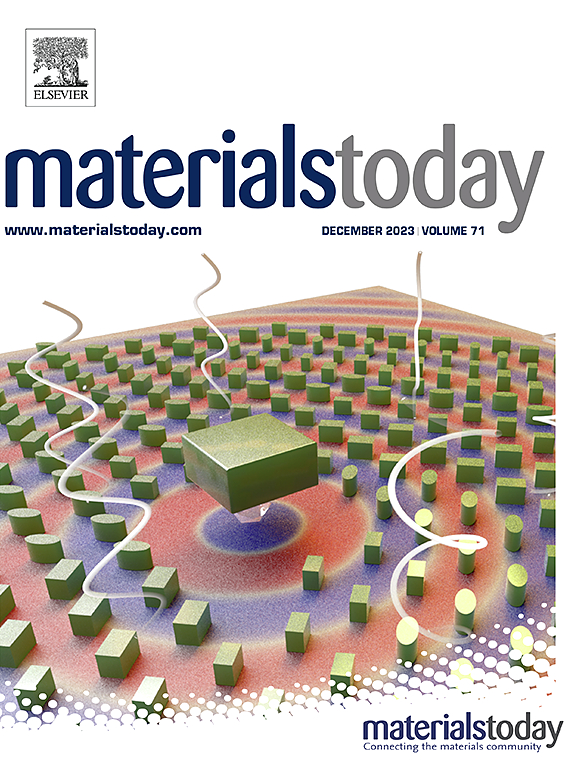光催化、光电化学制氢规模化及现场示范研究进展
IF 21.1
1区 材料科学
Q1 MATERIALS SCIENCE, MULTIDISCIPLINARY
引用次数: 0
摘要
在全球追求可持续能源解决方案的过程中,太阳能驱动的水分解制氢已成为一种有前途的方法,并因其清洁和可再生能源的潜力而引起了广泛关注。光催化和光电化学(PEC)分解水是目前在实验室研究中取得显著进展的两种关键方法。然而,从实验室规模的突破过渡到大规模部署仍然是一个艰巨的挑战,涉及一系列复杂的技术和工程问题。本综述旨在概述当前在扩大光催化和基于pec的制氢系统方面的最新进展,特别强调现场示范工作。更重要的是,了解与扩大这些技术相关的关键挑战,将有助于深入了解在过渡期间克服这些障碍的必要战略。通过总结在扩大规模和现场示范阶段所取得的成功和遇到的障碍,本综述有助于更广泛地了解大规模实施太阳能驱动的水分解以实现可持续制氢的过程。本文章由计算机程序翻译,如有差异,请以英文原文为准。

The advances on scaling-up of photocatalytic and photoelectrochemical hydrogen production and field demonstration
In the global pursuit of sustainable energy solutions, solar-driven water splitting for hydrogen production has emerged as a promising approach and attracted substantial attention, owing to its potential for clean and renewable energy resource. Photocatalytic and photoelectrochemical (PEC) water splitting are two pivotal strategies that have shown remarkable progress in laboratory research. Nonetheless, transitioning from lab-scale breakthroughs to large-scale deployment remains a formidable challenge, with a complex array of technical and engineering issues. This review aims to provide an overview of the current state-of-the-art progress in scaling up photocatalytic and PEC-based hydrogen production systems, with particular emphasis on field demonstration efforts. More importantly, to understand the critical challenges associated with scaling up these technologies will give insights into the strategies essential for overcoming these obstacles during this transition. By summarizing the successes and the impediments encountered during the scaling-up and field demonstration phases, this review contributes to the broader understanding of the journey towards large-scale implementation of solar-driven water splitting for sustainable hydrogen production.
求助全文
通过发布文献求助,成功后即可免费获取论文全文。
去求助
来源期刊

Materials Today
工程技术-材料科学:综合
CiteScore
36.30
自引率
1.20%
发文量
237
审稿时长
23 days
期刊介绍:
Materials Today is the leading journal in the Materials Today family, focusing on the latest and most impactful work in the materials science community. With a reputation for excellence in news and reviews, the journal has now expanded its coverage to include original research and aims to be at the forefront of the field.
We welcome comprehensive articles, short communications, and review articles from established leaders in the rapidly evolving fields of materials science and related disciplines. We strive to provide authors with rigorous peer review, fast publication, and maximum exposure for their work. While we only accept the most significant manuscripts, our speedy evaluation process ensures that there are no unnecessary publication delays.
 求助内容:
求助内容: 应助结果提醒方式:
应助结果提醒方式:


